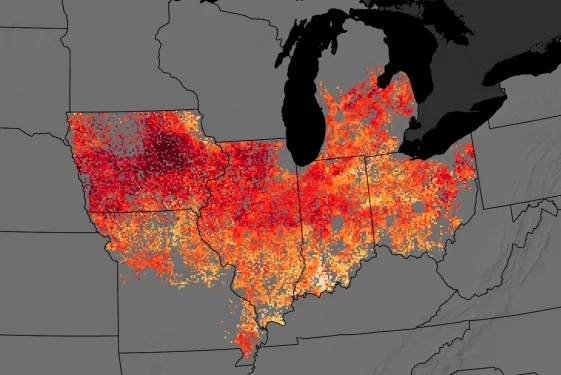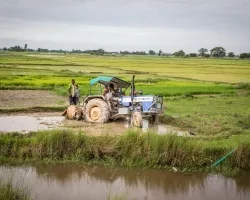Midwestern farmers plant corn and soybeans in the spring and harvest them in the fall. But during winter, the land is bare, and the valuable topsoil is unprotected. Cover crops can protect topsoil, but new research from NASA found they can also decrease crop yields.
According to the NASA Harvest study, primary cash crops are most affected.
“Many things need to go just right to avoid yield impacts, and that’s difficult to do,” said Jillian Deines, lead author of the study. “This study is a rare, quantitative look at how agricultural conservation practices perform in the real-world.” Deines is now an Earth scientist at Pacific Northwest National Laboratory.
Instead of relying on county-level statistics, NASA data allowed Deines's team to look at the field-level impact.
The study first identified farm fields that used cover crops for three or more years. Data from Landsat and NASA’s Moderate Resolution Imaging Spectroradiometer (MODIS) helped spot them.
Researchers then used a machine learning method to calculate yields. They found that almost all farmers using cover crops for three or more years had lower production than those who let the soil lay bare. Yields were especially hindered on corn fields and on drier fields. Researchers believe this may be because cover crops compete with primary crops for water and nutrients.
“Agriculture is a very tricky business to get right, and things typically don’t work out as planned,” said David Lobell. Lobell is a co-author of the study and leads crop yield studies for NASA Harvest. “The combination of satellite data and powerful machine learning methods can help us make better informed decisions about conservation practices.”
More information available at the NASA Earth Observatory story Midwest Farmers Using Cover Crops Take Small Yield Hit.




